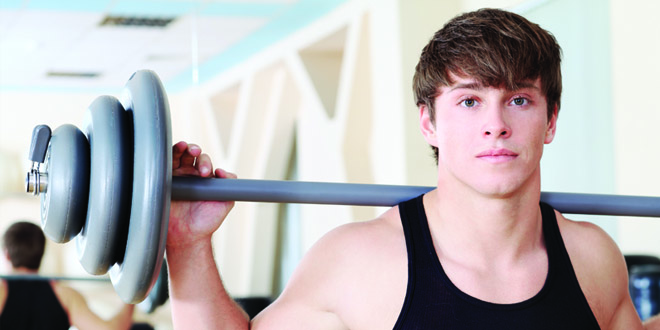
6 gym exercises you might be doing wrong
Most of us don’t work out under supervision of a trainer. We see a few videos or ask a friend how to do it. But when we do the actual exercise, we make a few mistakes.
Correct the following major exercises to maximize your gains and, more importantly, to avoid injury.
DEADLIFT
This is number one on my list since this is one of the best compound exercises utilizing almost all muscles groups of your body and more importantly it enables you to lift more weight, increasing the chance of injury even more. Here is how to do it:
Grip the bar tightly (either supine, pronate or even alternate grip, whatever you feel comfortable with), begin by lifting with your legs and not with your back. When the bar is at the level of the knee, explosively lift up using both, your legs and back, straighten your back as you go up. At the top of your lift, flex the back.
Keep your eyes forward and neck in a neutral position with your body and keep your back straight throughout the lift.
Do not, and I mean DO NOT, hold your breath. It shuts down oxygen supply to your brain when it needs it the most, and puts additional pressure on your abdominal cavity which can result in nausea, vomiting or even fainting. And I am not even exaggerating.
Rule of thumb is to inhale while going down and exhale when lifting up.
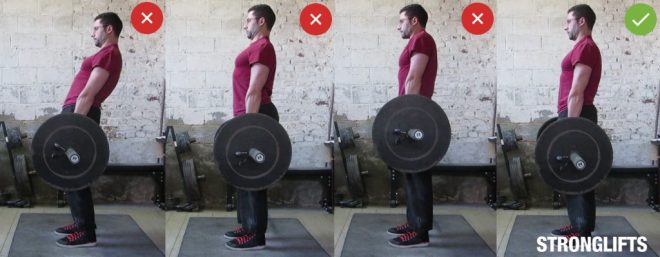
SQUATS
This is the king of lower back. If you do it right, you will have killer legs in no time. If you do it wrong, however, you can injure your lumber spine, tear your knee ligaments or sprain your ankle. Here is how to do it right:
Keep your feet planted in the ground, toes wide apart to increase stability, stand shoulder width apart with toes facing slightly outwards and position your ankles exactly below the hips. One of the common mistakes is not going down enough. When you go down, hips should be directly parallel to the floor or a bit lower. Not doing this will put all the stress on your knee, damaging the ligaments by time. When you go up, do not lock your knees. However, on top of the lift, squeeze your gluts.
Just like with dead-lift, do not hold your breath, keep eyes forward and neck in a neutral position. Back should be straight throughout the lift.
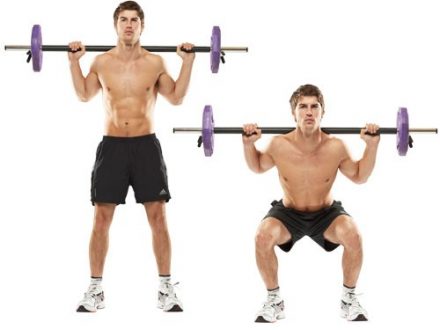
BEHIND-THE-BACK SHOULDER PRESS
This is again a workout that allows you to lift heavy weights. But this exercise makes use of smaller group of muscles, namely the deltoid and the four rotator cuff muscles.
To perform this exercise, open your arms such that your forearm is at 90 degrees to your upper arm. Your arms should make an “L” shape at the start position.
Slowly lift up the bar in a controlled manner, while exhaling out. Hold at the top position, and then slowly lower it, not more than the level of the lower lobe of the ear, inhaling as you go down, hold and repeat.
Lower it more than the lower lobe of the ear, and you will end up damaging your rotator cuffs (group of four small muscles which stabilizes the shoulder). Injury of rotator cuff is most common gym injury, and coming from personal experience, most painful injury. It takes a lot of time to recover from it.
So do not go too heavy, do not get too low and you should be fine.
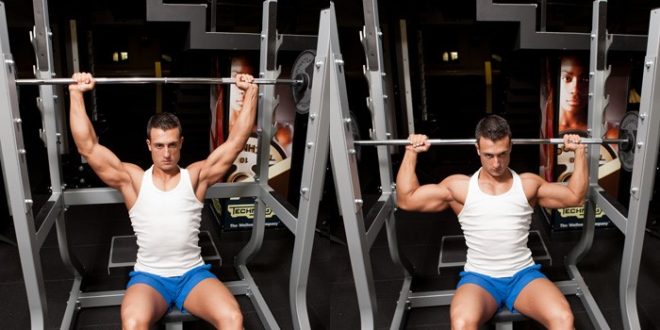
BARBELL CURL
This is the single best move for bigger biceps. But I have seen so many mistakes in this exercise. The most common of these is moving your shoulders forward while you lift; this puts extra stress on the shoulders and rotator cuffs as well as takes away stress from biceps, which does not give a 100% result.
Second most common mistake is swinging the body to lift the weight. While a little cheat in your final set can be useful to complete the number of reps, cheating all the time renders this amazing exercise inefficient.
To do it right, hold the barbell at shoulder width (closer grip concentrates more on the long outer head of bicep while a wider grip focuses most on inner shorter head).
Place your feet shoulder width apart. Arms locked by your sides and elbows directed inwards to your body. Slowly curl up till you feel your biceps are fully contracted. Stop at the top position, squeeze your biceps and then slowly curl downwards. Stay in control throughout the lift.
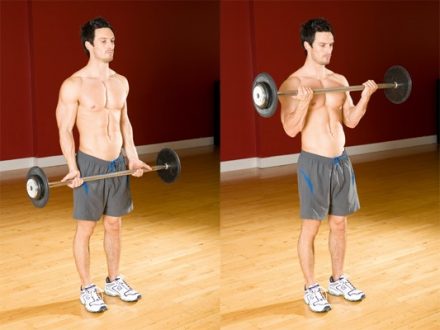
BENCH PRESS
Ah yes! This is a one-time favorite exercise of all gym goers. It lifts your ego by allowing you to lift more weight. But do it wrong and you might end up with a shoulder injury or unbalanced chest. Here is how to do it with proper form:
Plant your feet firmly on the ground and grab the bar tightly with true grip, but do not bend your wrists or you will add additional strain to it. Do not lift your back to push the barbell up. You will risk damaging your spine.
Unlike most other compound exercises, the bar does not have to travel in a straight line. Instead it moves diagonally so that the bar is at mid chest (just above the nipple) on the bottom of the move. Forearm should be vertical at this point and elbows shouldn’t be perpendicular to the torso or sticking out.
Instead it should be at an angle (approximately 75 degrees) and right above the shoulder on top of the move. On the top position, lock your elbows and flex your chest. Then slowly lower it back to mid chest breathing in as you do so. Just before it touches your chest, shoot the barbell up again while exhaling out.
Remember, if you are going heavy, make sure to have a gym partner or a spotter to avoid getting crushed under the barbell should you fail to lift the weight.
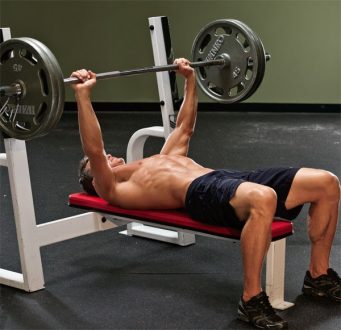
BENT OVER ROW
Grab a bar with under-grip shoulder width apart. Bend over so that your back is as parallel to the floor as possible. Hold the barbell diagonally in front of you below your chest; this is the starting position. Slowly bring the barbell close to your belly button with the retraction of scapula only.
Squeeze the shoulder blades together as if trying to crush something in between the scapulae. Slowly lower the weight back to the starting position. Back should be flat throughout the lift.
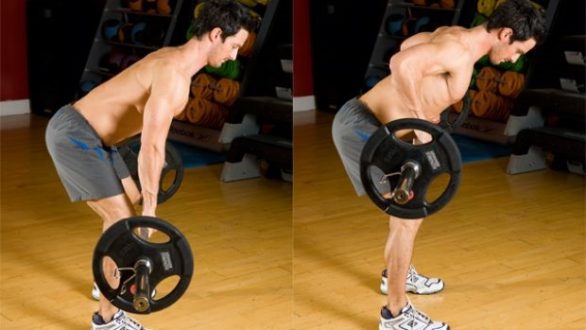
If you want these exercises to work effectively, make sure you follow these exercise tips. Otherwise, all your hard work would be futile.

